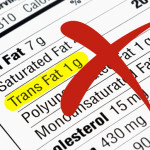New US ‘Nutrition Facts’ regulations poses challenges for food manufacturers exporting to the USA
The labelling regulations for conventional foods and dietary supplements is being amended by the US Food and Drug Administration (FDA), aimed to provide updated nutrition information on the label and assist consumers in maintaining healthy dietary practices. The amendment modernises the nutrition information found on ‘Nutrition Facts’ label, as well as the format and appearance of the label.
Among the many changes of the ‘Nutrition Facts’ label, which include larger font for the number of calories and servings per container, is a new line of text located just underneath ‘total sugars’. In this new line of text, FBOs are required to indicate exactly how much of the total sugars include ‘added sugars’, and what percentage of the daily value is represented by those added sugars. The word ‘includes’ is intended to clarify that added sugars are a sub-component of total sugars. The final regulation requires declaration of added sugars in grams (i.e., ‘includes x g of added sugars’) and declaration of a percent of Daily Value (hereinafter, %DV) for added sugars (however, not for total sugars). A footnote is intended to better explain what %DV means. It reads: “The %DV tells you how much a nutrient in a serving of food contributes to a daily diet. 2,000 calories a day is used for general nutrition advice”.
EU law, and the Codex Alimentarius, refer to ‘total sugars’, without a subcategory of ‘added sugars’. In the EU, the nutrition labelling provisions in Regulation (EU) No. 1169/2011 (hereinafter, FIR) harmonise nutritional information on energy and on certain nutrients on food. Nutrition labelling was optional under the FIR’s predecessor, and was only compulsory in two cases: 1) where a nutrition claim appeared on labelling, in presentation or in advertising; or
2) on fortified foods to which vitamins and minerals have been added. With a few exceptions, nutrition labelling is becoming mandatory for all foodstuffs as of 14 December 2016.
The FIR provides that the mandatory nutrition declaration must include the following: (a) energy value; and (b) the amounts of fat, saturates, carbohydrate, sugars, protein and salt. The content of the mandatory nutrition declaration may be supplemented by an indication of the amounts of one or more of the following: (a) monounsaturates; (b) polyunsaturates; (c) polyols; (d) starch; (e) fibre; and (f) any of certain vitamins or minerals and present in significant amounts.
At the international level, Article 2.4 of the WTO Agreement on Technical Barriers to Trade (TBT Agreement) provides that technical regulations must be based on the relevant international standards. The relevant measure is the Codex Guidelines on Nutrition Labelling (CAC/GL2-1985, revised in 2013). Most importantly, “where nutrient declaration is applied, the declaration of the following is mandatory: energy value; and the amounts of protein, available carbohydrate (i.e. dietary carbohydrate excluding dietary fibre), fat, saturated fat, sodium (or salt) and total sugars; and the amount of any other nutrient for which a nutrition or health claim is made”. Therefore, reference is made to ‘total sugars’ without an eventual ‘added sugars’ sub-category.
Of interest, the Codex Guidelines on Nutrition Labelling, states that the amount of any other nutrient considered to be relevant for maintaining a good nutritional status may be indicated, as required by national legislation or national dietary guidelines. A footnote to this provision gives as an example the circumstance that countries, where the level of intake of trans-fatty acids (TFAs) is a public health concern, may consider the declaration of trans-fatty acids in the nutrition labelling. The US has required the indication of TFAs in the past and continues requiring it in the new ‘Nutrition Facts’ label (regarding the status of TFAs in the US.
At the time of publishing the new legislation on nutrition labelling, the FDA recognised that what constitutes added sugars and how this might affect labelling of certain products has generated a lot of debate, inter alia, the question of whether juice from concentrate would need to label all sugars as added sugars). The FDA clarified its intent in the final regulation: sugars from fruit or vegetable juice concentrates are ‘added sugars’ only to the extent that they add sugars in excess of what would be expected from the same volume of 100% fruit or vegetable juice of the same type.
Arguably, the new US ‘Nutrition Facts’ requiring the indication of ‘added sugars’ constitute a barrier to trade that is not based on the relevant international Codex standard. Food industry will need to change their labels in order to access the US market. This will increase the difficulty of trade between the US and other countries. It is evident that careful analysis of the US market will be required from food industry to determine they do not fall foul of the new US regulations.
Article Credit:
Dr. Kalyana Sundram and Paolo Vegano










Leave a Reply